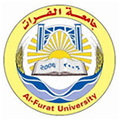آخر الأخبار
تقييم أداء وإنتاجية بعض الطرز الوراثية المدخلة من العصفر .Carthamus tinctorius Lتحت ظروف الزراعة التكثيفية
2010, Volume 2, issue 8,pp 143-163| Cite as
Evaluating the perfoemance and productivity of some introduced genotypes of safflower (Carthamus tinctorius L.)under the influence of intensive cropping conditions
| authors |
Youssef Nemer |
| Abstract |
This study was carried in the Faculty of Agriculture, University of Damascus during the growing season 2009 in order to assess the performance of 10 genotypes of safflower under intensive cropping conditions and its impact on the components of yield. Randomized complete block design has been used with three replications for each treatment. The following indicators have been studied: number of plants at harvest stage, plant height, number of branches / plant, length of branches of the first class, the number of discs / plant, number of seeds and its weight / disk, and the percentage of oil and then yield of seed. The statistical analysis indicated noting the superiority of the genotype Gila significantly as compared to other studied genotypes in the number of plants at harvest stage and therefore in the coefficient of adaptation (93.33%), the weight of thousand seeds (42.71 g), while the genotype PI301055 was significantly superior in the length of first class branches (24.53 cm) and oil content in seeds, The genotype Syrian-1was significantly superior in the average number of branches of the first class per plant (10 branches) and hence in the average number of flowering disks on the plant, which was reflected positively on the productivity of unit area of Petals (188.47 kg / ha) and yield of seed (3.80 t / ha) without any significant differences in the yield of seeds between this genotype and the seed yield of local genotype which was recorded the highest yields of seed (4.25 t / ha). The increase in the yield in the local genotype was maily due to large seed size with thousand seed weight of 40.54 g.
Key words: Safflower, intensive cropping, yield, genotype, Carthamus tinctorius L. |
| الكاتب |
يوسف نمر |
| الملخص |
نفذت هذه الدراسة في مزرعة كلية الزراعة بجامعة دمشق خلال الموسم 2009 بهدف تقييم أداء 10 طرز وراثية من العصفر في ظروف الزراعة التكثيفية وأثر ذلك في مكونات الغلة فيها. وأظهرت نتائج التحليل الإحصائي تفوق الطراز Gila معنوياً على كافة الطرز المدروسة بعدد النباتات بمرحلة الحصاد وبالتالي في معامل التأقلم (93.33%)، وفي وزن الألف بذرة (42.71 غ)، في حين تفوق الطراز PI301055 معنوياً في صفة طول أفرع الدرجة الأولى (24.53 سم) وفي نسبة الزيت في البذور (39.3%)، وتفوق الطراز Syrian-1 معنوياً بمتوسط عدد أفرع الدرجة الأولى (10 أفرع) وعدد الأقراص الزهرية على النبات مما أنعكس إيجابا على مردود وحدة المساحة من البتلات (188.47 كغ/ هكتار) والغلة من البذور (3.80 طن/ هكتار) دون أن تكون فروقات معنوية في المؤشر الأخير بينه وبين الشاهد المحلي الذي تميز بأعلى غلة من البذور (4.25 طن/ هكتار)، ويعزى تفوق الشاهد في الغلة إلى إعطائه لبذور كبيرة الحجم بلغ وزن الألف منها 40.54 غ. |














